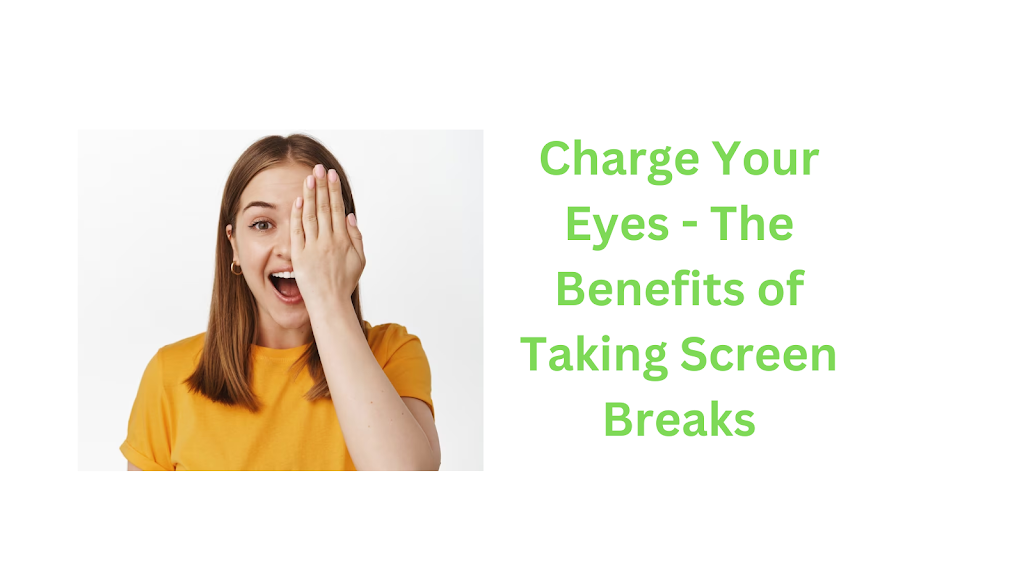What Is Digital Eye Strain?
We all know the feeling—you’ve been staring at your computer screen for hours, and now your eyes feel strained, your neck is tight, and you have a headache. Don’t worry, you’re not alone! Digital eye strain (also called computer vision syndrome) is a common condition that affects anyone who uses digital devices for long periods.
Digital eye strain can cause a range of symptoms, including headaches, blurred vision, dry eyes, neck and shoulder pain, and general eye fatigue. This can be due to the blue light emissions from electronic screens that may disrupt circadian rhythms and contribute to tiredness. Additionally, when eyes are forced to focus on close objects—like a laptop screen or smartphone—they can become fatigued more easily.
For these reasons (and more), it’s important to make sure you give your eyes regular breaks from electronic screens. Doing so will help reduce the effects of digital eye strain and keep your eyes feeling healthy.
Symptoms of Digital Eye Strain
If your eyes feel strained, irritated, or just like they need a break after a long day in front of a screen, you could be experiencing digital eye strain. It’s estimated that up to 90% of people who use digital devices for more than three hours per day experience at least one symptom of digital eye strain.
What are some of the telling signs? They include eye fatigue and irritation, headaches, blurred vision, neck and shoulder pain, and dry eyes. For those using contact lenses or glasses, you may find that your vision has worsened or that your prescription needs updating more often.
 |
| Charge Your Eyes – The Benefits of Taking Screen Breaks |
Taking breaks can help reduce the harmful effects of screen time on your eyes. Breaks allow the muscles controlling the lens of the eye to relax which reduces stress and allows blood to flow to the eyes. This refreshes them and helps protect your vision long-term.
Taking Regular Breaks: How It Helps
Regular breaks from looking at screens are essential for healthy eyes, and you’re probably not taking enough. Taking a break every 20 minutes is recommended for optimum wellbeing, as simply glancing away from the screen helps your eye muscles to relax and rejuvenate.
Improves Concentration
Those short breaks are more than just healthful—they can actually help you focus more easily when you come back after a break. That’s because those short breaks help your eyes to reduce fatigue, which leads to sharper concentration and better productivity!
Reduces Eye Strain & Headaches
We’ve all experienced it: That sensitivity to light, that slight dizziness, and sometimes even headaches when we look at our screens too long. Well, there’s a simple solution: Take regular breaks and allow your eyes to adjust to different distances so that they don’t get stressed out! And if you’re working on the computer all day long, wearing blue light glasses or using programs like f.lux can be great assets in preventing eye strain.
Tips for Healthy Computer Use
If you need to stare at a computer for long periods of time, there are some tips you can use to prevent eye strain or headaches. First and foremost, remember to take regular screen breaks. Taking a break every 20 minutes is recommended, and then every two hours take a fifteen-minute break. This will help your eyes adjust and give them the break they need and crave.
The 20-20-20 Rule
The 20-20-20 rule is a great way to reduce eye strain and headaches. Every 20 minutes of screen time look away at something that is 20 feet away from you for 20 seconds. This helps your eyes relax and reset so they don’t get worn out due to strain from the screen’s bright light.
Blink Often
Since staring at screens tends to have us blinking less than we would otherwise, it’s important to remind yourself to blink often—this helps keep your eyes hydrated and lubricated, which reduces dryness that leads to irritation or discomfort in the eyes.
Adjust Brightness & Contrast Settings
Adjusting the brightness levels on your devices can also help you avoid eye strain by reducing glare off the screen. You should also adjust contrast settings as needed—this makes it easier for your eyes discerning faint details of what’s on the screens, as well as reducing harsh glares that cause strain in your eyes after extended periods of use.
Remembering these tips will go a long way toward helping you avoid experiencing any kind of discomfort associated with staring at screens all day long!
How to Manage Blue Light Exposure
It’s easy to get lost in the world of digital information overload, but it’s important to remember that too much screen time can do a lot of harm. Digital eyestrain is real, and it can affect anyone who stares at a phone or computer screen for too long periods of time. The key is to find ways to manage your exposure to blue light so you don’t have to give up using digital devices altogether.
Take Breaks
This may seem like obvious advice, but taking breaks is essential if you’re trying to manage blue light exposure. Make the most of your breaks by looking away from your screen for at least 20 seconds every 20 minutes—staring into the distance helps give your eye muscles a rest. If you can, take regular breaks during the day—even if it’s just five minutes—and stretch or walk around and focus on something else before starting again.
Use Anti-glare Screen Protectors
Anti-glare and anti-blue light screen protectors help reduce the amount of light your eyes are exposed to when using digital devices. These protectors are easy to install and can be used on laptops, phones, tablets, and computer monitors alike. Plus, they help reduce glare from bright lights which can make screens much easier to use in direct sunlight.
Adjust Screen Brightness
Making sure your device’s brightness level is set correctly will also help keep blue light exposure in check—after all, it’s harder for your eyes if the display is set too bright or too dim for a comfortable viewing experience. Using dimmer settings when indoors and bumping up the brightness level when outdoors should help reduce eye strain and headaches caused
Conclusion
Taking a break from screens is more important than ever now that we’re spending more time in front of them than ever. Regular breaks from screens can reduce eyestrain, headaches, and other symptoms related to prolonged computer use.
Developing healthy habits for using digital devices, such as taking frequent breaks, using night mode, and adjusting the brightness and contrast, can help protect our eyes and prevent symptoms such as headaches, blurred vision, and fatigue. Taking regular breaks from screens is essential for maintaining healthy eyes, a healthy body, and a healthy mind. So take a break, and charge your eyes!
